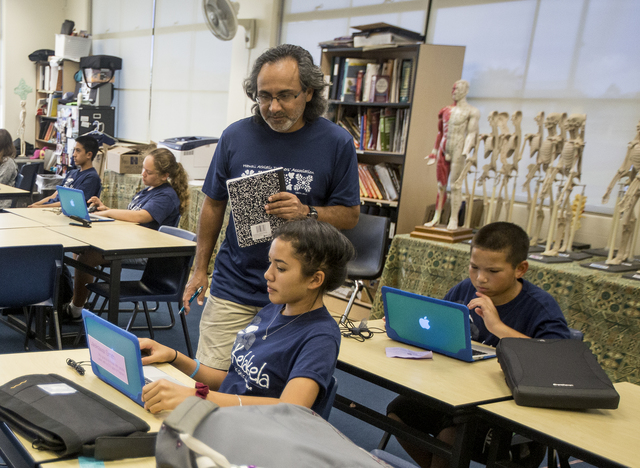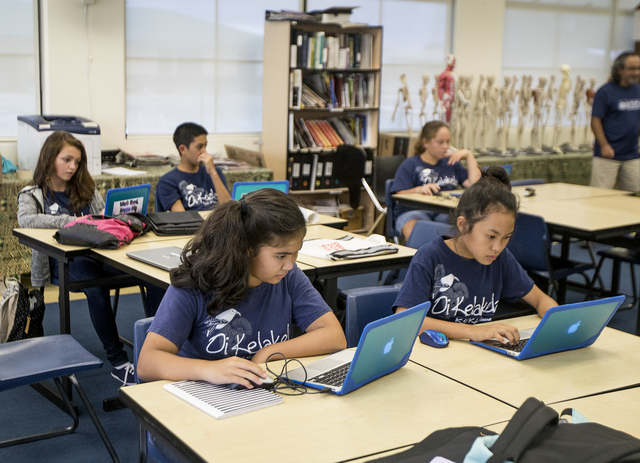Not all hits and collisions will result in concussions. So how do you know if one has happened? And how can you tell when the brain has recovered enough to go back on the field? ADVERTISING Not all hits and
Not all hits and collisions will result in concussions. So how do you know if one has happened? And how can you tell when the brain has recovered enough to go back on the field?
Coaches, trainers, parents and students are required to go through concussion education at the start of each season, learning to recognize symptoms. Students also take baseline tests.
A baseline test is a measure of cognitive response time. Balance testing also is used on occasion. During preseason, kids take the test — Hawaii uses the most commonly available product, made by imPACT Applications Inc. — and their score and response times are cataloged.
If the athlete then suffers a concussion, trainers can re-test the student and see how their score compares to the initial baseline.
“A person can suffer little to no physical symptoms,” said Kamehameha Schools trainer Zeny Eakins. “We had a student who physically had good numbers, but we retested that student on imPACT: His reaction time was slow, his memory was slow. We had to take a closer look and see what the issue was there.”
“It’s so hard to have a grasp on that cognitive reaction,” she said. “It’s hard to measure, so the imPACT is a really good resource to have.”
Athletic trainers, often the first to treat sidelined players, test 9th- and 11th-grade students at the start of the season to establish the baseline for the rest of the year. Testing is paid for by the Hawaii Concussion Awareness Management Program. Each license from imPACT, the developer of the tests, costs $600 regardless of student body size.
“It’s little things like that that we try to help the schools out with,” said HCAMP co-director Nathan Murata, chair of the University of Hawaii at Manoa Kinesiology and Rehabilition Science department.
“Every little bit helps, every cost. That’s ultimately why we’re doing this.”
Until this year, the baselines were recommended but not formally required. Still, most schools incorporated the procedure into their preseason, according to HCAMP records.
“Some schools are saying it is (part of preseason), some schools are saying they’ll get on it,” Murata said. “Others are just going with whatever they’ve been doing in the past.”
If a concussed student has no baseline to go from, there are national norms that HCAMP’s neuropsychologist can use to make comparisons.
Recent numbers for the amount of baselines at Big Island Interscholastic Federation schools varied from zero to more than 400 annually.
“We’ve been looking primarily the last couple of years only at the contact sports,” Murata said.
Some schools, like Kamehameha, test their middle school athletes in addition to the high-schoolers. Others, like Kohala High, did not test at all in the past two years.
“It’s going to be tough just for our group, our team to monitor,” Murata said.
“That’s why we leave it up to the schools and try to support them as best we can. I think now more and more they’re realizing the value of it.”
In its first year, 2010, HCAMP had 4,683 baselines reported statewide. Since then, the number has varied between 9,000-10,000 baseline tests.
Murata said he expects that number to increase this school year because of the mandatory baseline testing in the new legislation.
“We’re looking forward to that,” he said.




